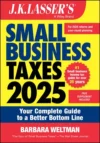Newly Constructed House Fails Home Sale Exclusion
Gain on the sale of a principal residence can be excluded up to $250,000 ($500,000 for joint filers). This exclusion applies only if the homeowner has owned and used the residence for at least 2 of the 5 years preceding the date of sale. But what if a new house is built on the site of a former residence? This was the question presented to the Tax Court.
In the case, a couple wanted to remodel their home but, because of building codes and other reasons, decided to demolish the old house and build a new one on the site. Once the new house was completed, they sold it for $1.1 million and excluded gain from this sale of $500,000.
The Tax Court disallowed the exclusion in this case. The IRS argued that the couple in this case did not sell the home that they had owned and used as their principal residence for the required period; that was the property that they demolished. The Court sided with the IRS.
After examining dictionary definitions of the terms property and principal residence and the legislative history on the home sale exclusion, the Court concluded that the exclusion applies only if the dwelling a taxpayer sells was actually used as his or her principal residence for the period required by law. In this case, while the demolished home was used as a principal residence for the requisite period, the newly built home was not. Therefore, the exclusion could not be used in this case.
David A. Gates et ux.; 135 TC No. 1
Self-employment tax
Tax paid by self-employed persons to finance Social Security coverage. In 2007, there are two rates. A 12.4% rate applies to a taxable earnings base of $95,700 or less and a 2.9% rate applies to all net earnings.



